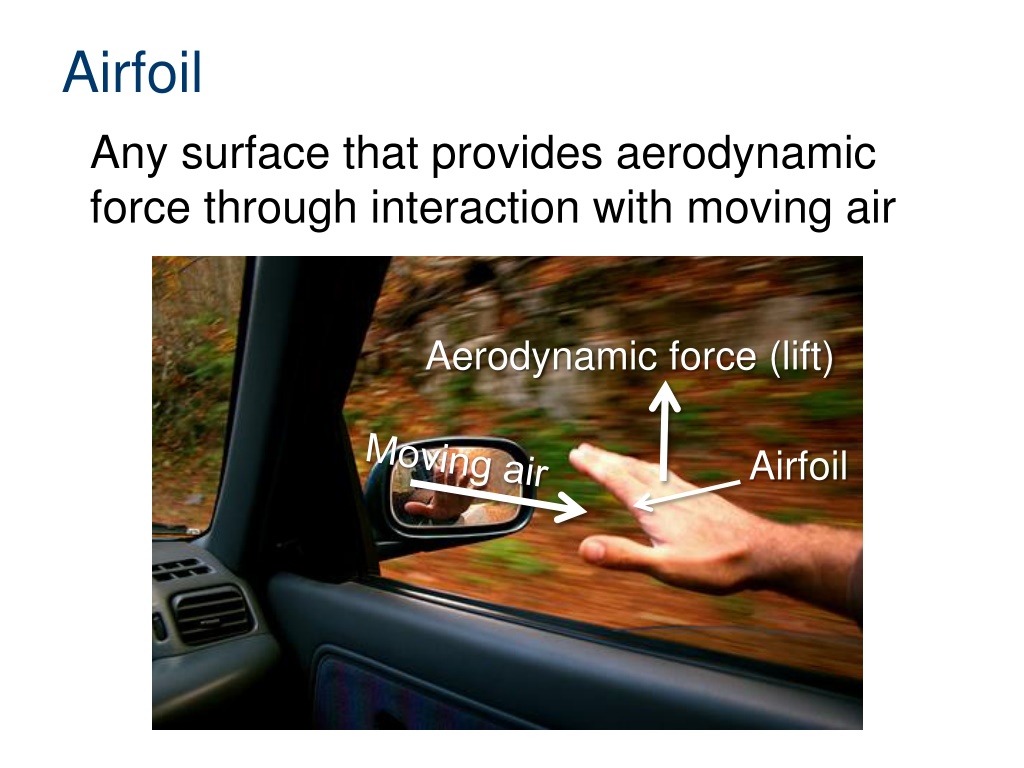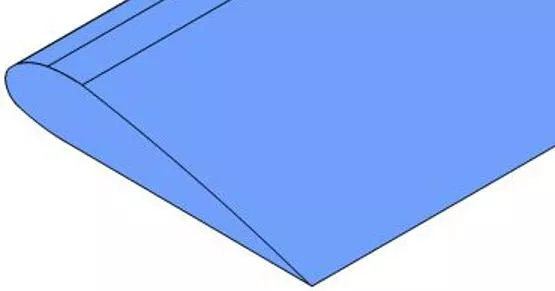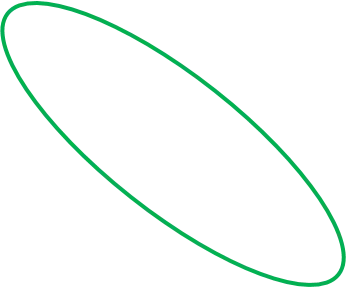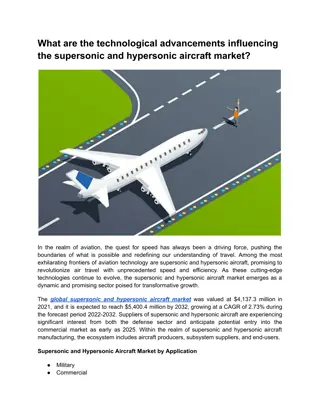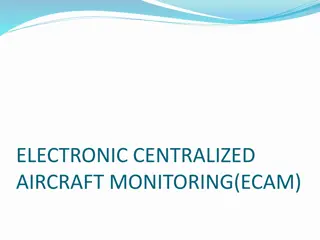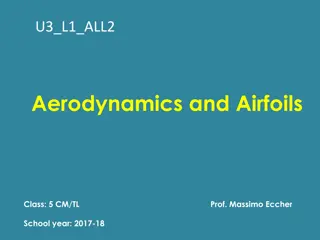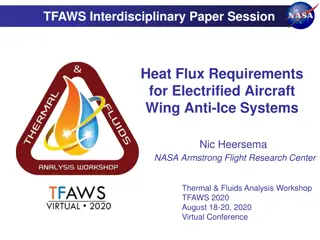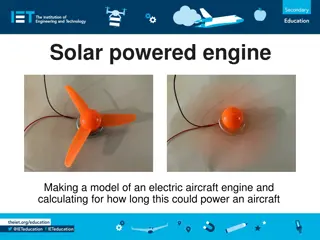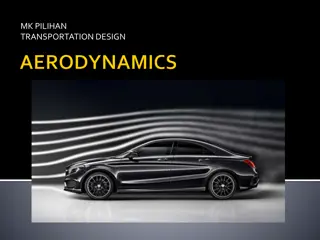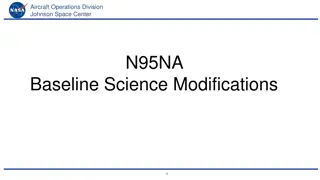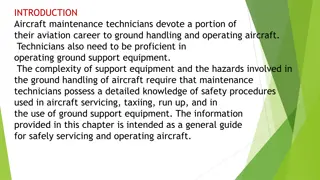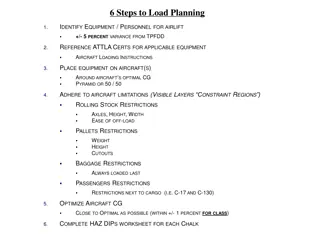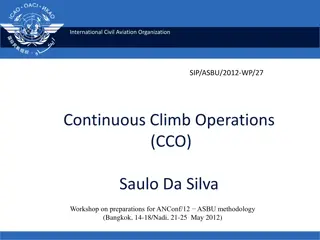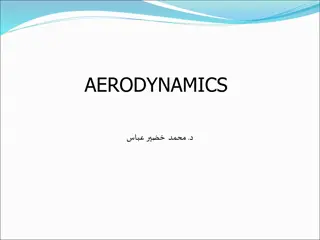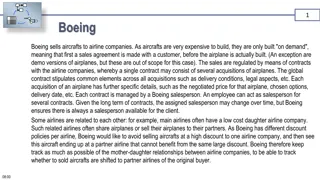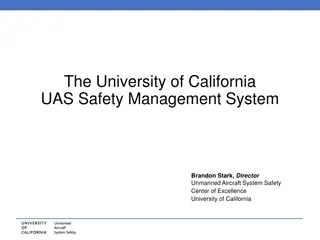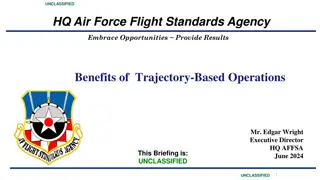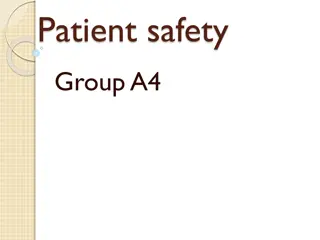Aircraft Airfoils in Aerodynamics
Aircraft airfoils play a crucial role in aerodynamics, generating lift as air flows over them. Each component, from the leading edge to the trailing edge, contributes to the overall performance of the wing. Understanding key elements such as camber, chord line, and angle of attack is essential for optimizing aircraft efficiency and safety. High lift devices like flaps enhance performance during takeoff and landing. Explore the intricacies of airfoil design and operation to grasp the essence of flight dynamics.
Uploaded on Feb 26, 2025 | 0 Views
Download Presentation

Please find below an Image/Link to download the presentation.
The content on the website is provided AS IS for your information and personal use only. It may not be sold, licensed, or shared on other websites without obtaining consent from the author. Download presentation by click this link. If you encounter any issues during the download, it is possible that the publisher has removed the file from their server.
E N D
Presentation Transcript
Airfoil Any surface that provides aerodynamic force through interaction with moving air Aerodynamic force (lift) Airfoil
Airfoil Lift Any surface that provides aerodynamic force through interaction with moving air Direction of Flight Lift Airfoil is a 2D cross section of a 3D wing Air
Aircraft Airfoils Wing components Leading Edge Point of first contact between airfoil and moving air
Aircraft Airfoils Wing components Trailing Edge Point of last contact between upper and lower surface air flow
Aircraft Airfoils Wing components Chord Line Imaginary line drawn between the leading edge and the trailing edge Chord Line
Aircraft Airfoils Wing components Camber Curve of the upper and lower surfaces of the airfoil Determines the air flow velocity on the upper and lower wing surface Upper Camber Mean Camber Line Chord Line Lower Camber
Aircraft Airfoils Wing components High Lift Devices Flaps increase camber equally on both wings Increase lift and drag at slow speeds for takeoff and landing Increased Camber Flap Retracted Flap Extended
Aircraft Airfoils Wing components Angle of Attack Angle between the chord line and direction of the relative wind Relative Wind Angle of Attack
Aircraft Airfoils Wing components Angle of Attack The maximum angle of attack where airflow separates from the top wing surface is the critical angle of attack Condition is called a stall Critical Angle of Attack
Aircraft Airfoils Wing components review Upper Camber Mean Camber Line Leading Edge Trailing Edge Relative Wind Angle of Attack Lower Camber Chord Line
Airfoil Design Components Planform Top and bottom view of the airfoil shape Straight Elliptical
Airfoil Design Components Planform Top and bottom view of the airfoil shape Tapered
Airfoil Design Components Planform Top and bottom view of the airfoil shape Delta Sweptback
Airfoil Design Components Aspect Ratio Ratio of wing span to the average chord width The higher the aspect ratio, the higher the lifting efficiency Avera Span ge Chord Aspect Ra tio = Width 36 5 ft ft = 7.2 What is the aircraft s aspect ratio? What is the aircraft s planform? Tapered
Airfoil Design Components Aspect Ratio Span ge Chord Aspect Ra tio = Avera Width 50 2 ft ft = 25 What is the aircraft s aspect ratio? What is the aircraft s planform? Tapered
Airfoil Design Components Wing Area Total surface area of the wing Wing Ar Span Average ea = Chord Width = 180 sq ft What is the aircraft s wing area? 36 5 ft ft
Airfoil Design Components Wing Area Span Average Wing Ar ea = Chord Width = 100 sq ft What is the aircraft s wing area? 50 2 ft ft
